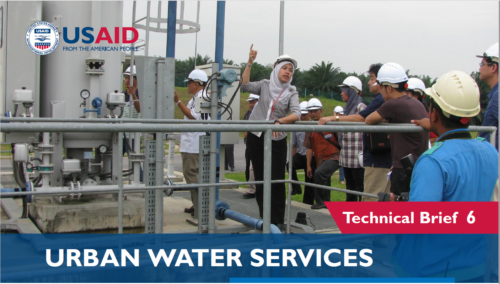USAID Water and Development Technical Series: Urban Water Services
Cities play a key role in building a better future in an increasingly urbanized world. Improved urban services, such as reliable domestic water services, contribute to improved economic growth, health, and cleaner environments.
